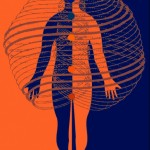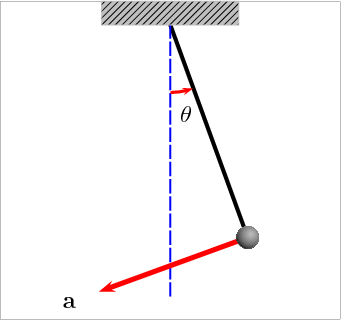E6 : The Pendulum
Type 6
Type 6 may be the most difficult type to convey succinctly and comprehensively, partly because, compared to the other types, it straddles the widest polarity of opposing realities. And no less confounding is how evenly split this self-bifurcation is: essentially, exactly 50/50.
All the Types are mechanistic – able to be conceived of and visualized, in the abstract, each as their own integrated arrangement of inner gears, pulleys, levers; a simple motor, if you will, each part representing the major building blocks of psyche: ego, superego, id, the Centers (Head, Heart, Gut) and so on, interlaced perhaps by a connective belt of directional influence, producing each Type’s stylized dynamic of intrapsychic movement. The Six mechanism perhaps centers around a rather simple structural form, with a core component built largely around a two-dimensional polarity, connected by a single straight line, but this design paradoxically generates a greatly contrasting palette of possible manifestations of the 6 fixation in individual Sixes, one to the others, and even within a single individual.
This type is the spirit of contradiction, through and through. Any and all traits that we might assign to it, we’d have to include each and every opposite as well, with essentially no exceptions. Rather than viewing E6, though, as a catch-all for those that are difficult to type, this characteristic (structural) blockage in accessing the integrated middle, itself, draws a significant contrast between this type and the rest, and will therefore assist in spotting E6 in ourselves and others.


To get at this type’s emphasis on opposites and polarities, consider the concept in terms of 6’s relationship to 9: viewing it from the perspective of the central Enneagrammic building block — the number 3 — Type 6 is two opposing 3s, while 9 adds a third 3, the neutralizing agent, the integrative function, or (on the low side) having a dispersive role. In further contrast, looking at 6’s other first cousin, Type 3, this personality style has the single-mindedness (uni-directionality) of a single 3 — a capacity for a kind of efficient self-unity or self-hypnosis, if you will. Turning back to Type 9, we might say, purely as a conceptual device, that a Nine “was a Six in his past life”, which explains the Nine’s prime imperative to solve the opposition, apparently overly guarded against the re-emergence of his past conflicted self — the pendulum — a swaying Sword of Damocles.
In the context of understanding all the types – and understanding basic human nature – Six becomes important because it’s uniquely archetypal to the human dilemma, i.e.- this quality of bifurcating everything (into good/bad, right/wrong, true/false, real/unreal) is a universal condition; it undercuts our endeavors and thoughts, in people of all types. On one level, Type 6 is an incarnation of Superego, which is the core dynamic/engine of what keeps our fixated personalities operating. The divided self, the antagonist within, the split will, indecision, questioning. Six is the typological personification of Light and Shadow, a living incarnation of our fundamental disunity and crisis of faith, seemingly decoupled from the direct intuitive channel to Source, the plug into firsthand experience and understanding of Purpose and Meaning. Perpetually unsure whether the Universe is friend or foe.
 A structural development that organically falls out from this fundamental precariousness – at a cellular level of psyche – is something that might be called the Grid, a compulsion to set an abstract latticework, a hard logical fortification, across the canvas of the random universe. This can take on many forms: from religion to astrology (which both set something of a static graph in the sky), to law and psychology (which have their precedents and systems), definitions and schools of thought, a compulsion toward abstract seizure and control of the chaos of human nature through delineation and codification in mental space. For some 6s, this can take the form of outwardly seeking and adhering to established authorities, doctrines, creeds…and, true to the pendulum, pushing hard against these same entities. For other 6s, the process may be much more abstract and solitary, yet still having a tendency to favor man-made structures.
A structural development that organically falls out from this fundamental precariousness – at a cellular level of psyche – is something that might be called the Grid, a compulsion to set an abstract latticework, a hard logical fortification, across the canvas of the random universe. This can take on many forms: from religion to astrology (which both set something of a static graph in the sky), to law and psychology (which have their precedents and systems), definitions and schools of thought, a compulsion toward abstract seizure and control of the chaos of human nature through delineation and codification in mental space. For some 6s, this can take the form of outwardly seeking and adhering to established authorities, doctrines, creeds…and, true to the pendulum, pushing hard against these same entities. For other 6s, the process may be much more abstract and solitary, yet still having a tendency to favor man-made structures.
Δ Δ Δ

